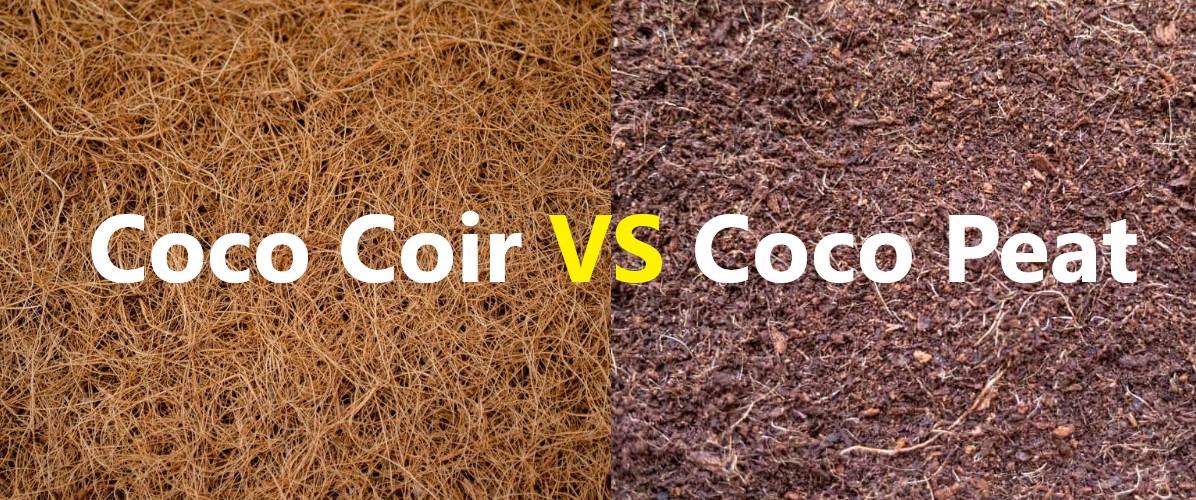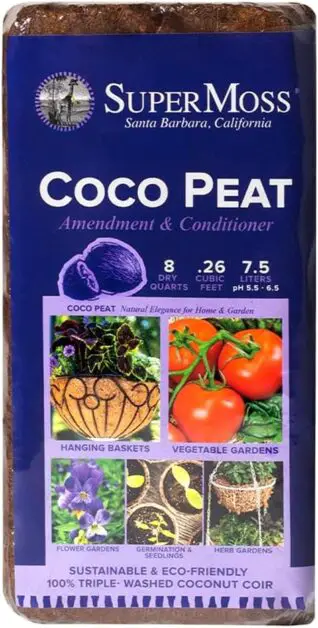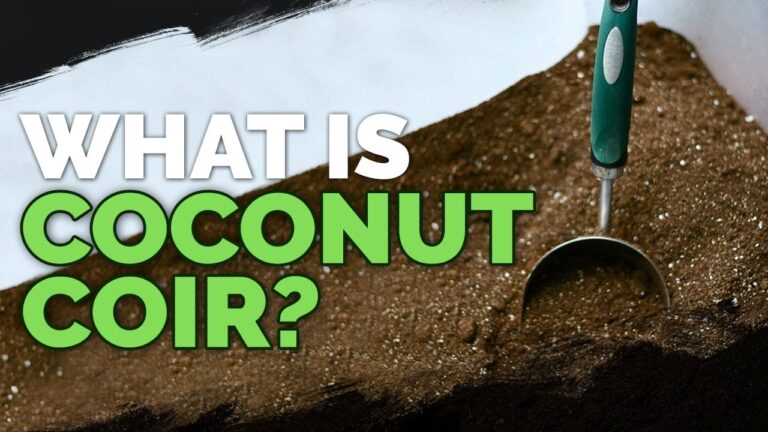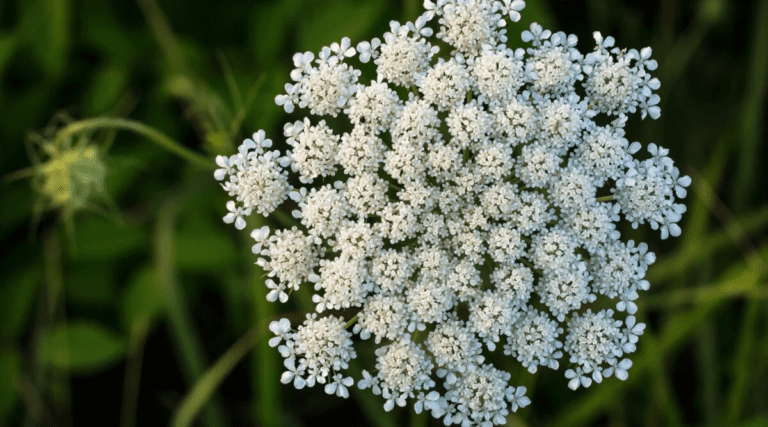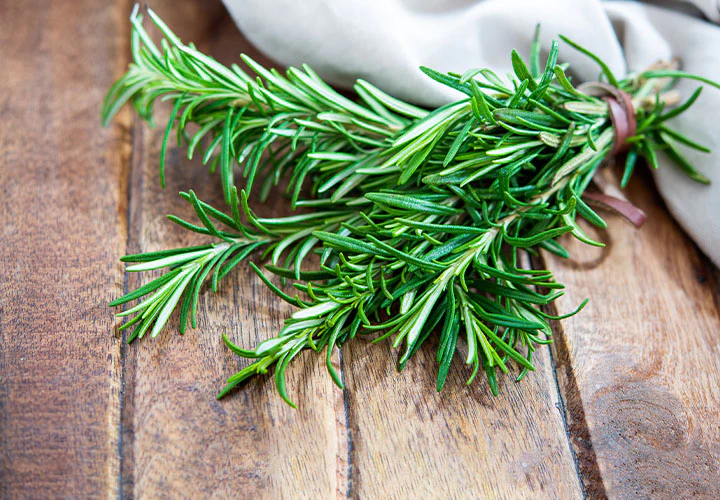Coco Peat vs Coco Coir: Breaking Down the Differences
Did you know that coco peat and coco coir are not the same thing? If you’ve ever wondered about the differences between these two popular gardening materials, you’re in the right place! Coco peat and coco coir both come from the same source—coconut husks—but they have distinct characteristics and uses. In this blog, we’ll break down the differences between coco peat and coco coir, helping you make informed choices for your gardening needs. Whether you’re a seasoned gardener or just starting out, understanding these distinctions will elevate your planting game. Let’s dive in and uncover the secrets of coco peat versus coco coir
Table of Contents
What is Coco Peat?
Coco peat, also known as coir pith, is a natural, renewable, and highly versatile growing medium that is derived from the fibrous husk of coconuts. It is widely used in horticulture and gardening due to its excellent water retention properties and ability to provide mechanical support to plants.
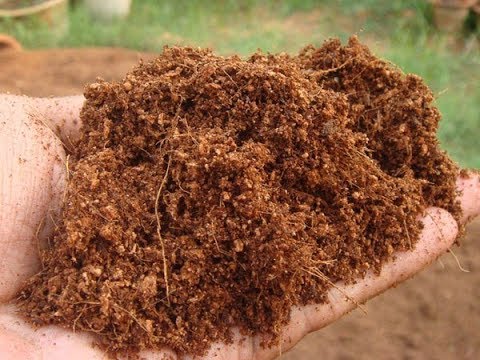
- Coco peat is a byproduct of the coconut industry and is often considered an eco-friendly alternative to traditional soil-based growing mediums.
- One of the key characteristics of coco peat is its ability to retain large quantities of water while still allowing for sufficient oxygenation of plant roots.
- This is due to its high porosity, which enables it to hold water like a sponge.
- The water retention ability of coco peat is particularly beneficial in arid and dry regions or for plants that require a consistently moist growing environment.
- Additionally, coco peat has a neutral pH level, which means it is less likely to cause fluctuations in the pH of the growing medium, providing stability for plant growth.
What is Coco Coir?
Coco coir, also known as coco peat or simply coir, is made from the fibrous husk of coconuts. It is a natural and sustainable byproduct of the coconut industry, making it an environmentally friendly alternative to peat moss. Coco coir is gaining popularity among gardeners and hydroponics enthusiasts due to its excellent water retention and nutrient retention properties.

- Unique Composition:
- Rich in Lignin, Cellulose, and Hemicellulose: These components provide structural integrity and promote aeration.
- Beneficial Microorganisms: Coco coir contains microorganisms that enhance soil health and plant growth.
- Water Retention:
- High Water-Holding Capacity: Coco coir can hold up to 10 times its weight in water.
- Moisture Accessibility: Even in dry conditions, plants have consistent access to moisture.
- Ideal for Limited Water Availability: Use
- ful in areas with scarce water resources.
- Non-Compacting Nature:
- Unlike peat moss, coco coir does not compact over time.
- Root Development: Non-compaction allows for better root development.
- Improved Nutrient Uptake: Healthy roots absorb nutrients effectively.
In summary, coco coir’s water retention, structural benefits, and compatibility with hydroponic systems make it an excellent choice for plant cultivation! 🌱💧Stay tuned for the next section to learn more about the nutrient retention of coco coir and its suitability for different types of plants.
Having utilized the Burpee Organic Coir Compressed Seed Starting Mix, I found it to be an excellent option for germinating seeds and nurturing young seedlings. Its organic composition provided a sustainable and environmentally friendly growing medium, aligning well with my desire for eco-conscious gardening practices. The coir-based mix demonstrated impressive water retention capabilities, ensuring consistent moisture levels crucial for seed germination and early plant development. Additionally, its pH-neutral nature created a stable growing environment conducive to healthy root establishment and overall plant growth.
However, I did encounter some minor drawbacks during my experience. While the coir mix provided adequate aeration and drainage, I found that it required supplemental nutrients for optimal plant growth. This necessitated the use of organic fertilizers or soil amendments to ensure that seedlings received essential nutrients as they matured.
Additionally, the compressed bricks of coir expanded significantly upon hydration, requiring careful handling to prevent unexpected expansion. Despite these minor challenges, the Burpee Organic Coir Compressed Seed Starting Mix proved to be a reliable and effective choice for starting seeds and nurturing young plants, contributing to successful gardening endeavors with its sustainable and nutrient-rich composition.
- Organic Material: Made from organic coir, this seed starting mix is environmentally friendly and sustainable.
- Promotes Healthy Growth: The coir-based mix provides excellent aeration and drainage, promoting healthy root development for seedlings.
- Low Risk of Disease: Coir has natural antifungal properties, reducing the risk of soil-borne diseases that can affect young plants.
- pH Neutral: Coco coir typically has a pH level close to neutral, providing a stable environment for seedlings and reducing the need for pH adjustments.
- Retains Moisture: Coir has the ability to absorb and retain water well, ensuring consistent moisture levels for seed germination and plant growth.
- Versatile Use: Suitable for starting seeds both indoors and outdoors, making it a versatile option for gardeners.
- Biodegradable: Once plants are established, the coir mix can be incorporated into the soil or composted, adding organic matter to the garden.
- May Require Additional Nutrients: While coir provides a good growing medium, it may lack some essential nutrients for plant growth, necessitating the use of fertilizer or amendments.
- Potential for Compaction: Over time, coir-based mixes can become compacted, reducing aeration and drainage, which may affect plant health if not addressed.
- Expands When Wet: The compressed bricks of coir expand significantly when hydrated, so proper storage and handling are essential to prevent unexpected expansion.
- Variable Quality: The quality of coir products can vary depending on the source and processing methods, so it’s essential to choose a reputable brand.
- Limited Availability: Coco coir may not be as readily available as other seed starting mediums in some areas, requiring special ordering or sourcing.
- Cost Considerations: While generally affordable, coir-based mixes may be more expensive than traditional soil-based seed starting mixes, which could be a consideration for budget-conscious gardeners.
The Composition of Coco Peat
Coco peat, also known as coir pith or coir dust, is the byproduct of coconut processing. It is the fibrous material that remains after the husks of coconuts are removed and the fibers are extracted. Coco peat consists primarily of cellulose, lignin, and hemicellulose, making it a rich source of organic matter.
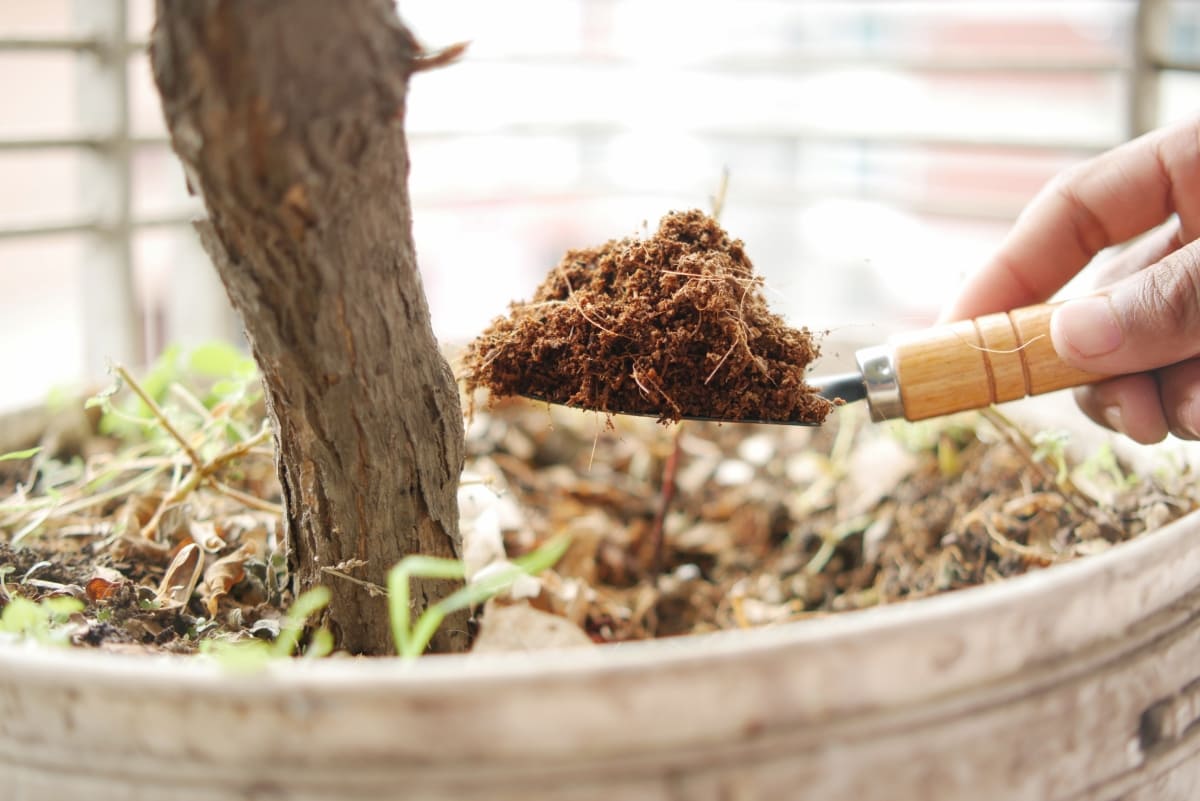
- The composition of coco peat can vary depending on factors such as the age of the coconut husks and the processing methods used.
- Generally, coco peat has a high lignin content, which gives it its characteristic brown color.
- It also contains a considerable amount of cellulose, which provides structure and stability to the material.
- The hemicellulose content in coco peat contributes to its water retention and nutrient holding capacity.
- Overall, the composition of coco peat makes it an excellent alternative to traditional soil amendments for plant growth and cultivation.
In the next section, we’ll explore in more detail the composition of coco coir, another popular coco product that is widely used in gardening and horticulture. Understanding the composition of coco coir will further shed light on the unique properties and potential applications of this versatile material.
The Composition of Coco Coir
Coco coir, also known as coconut fiber, is a natural byproduct derived from the husk of coconuts. It is composed of the fibrous material surrounding the hard inner shell of the coconut. The composition of coco coir is rich in lignin, cellulose, and hemicellulose, which gives it a sturdy and fibrous texture.

High Absorbency and Water Retention:
- Coco coir’s composition allows it to hold water effectively, surpassing traditional soil in moisture retention.
- Ideal for hydroponic systems or as part of potting mixes due to its high water-holding capacity.
Stable Moisture Levels:
- The absorbent nature of coco coir maintains consistent moisture levels, reducing the risk of over or under watering.
Neutral pH Level:
- Coco coir possesses a neutral pH level, making it suitable for a wide range of plants with different acidity preferences.
Advantages for Gardening:
- Coco coir’s fibrous structure provides stability and aeration, promoting healthy root growth.
- Incorporating coco coir into gardening practices can enhance plant growth and overall health, offering versatility and compatibility with various plant species.
Uses of Coco Peat
Coco peat, also known as coir pith, is a versatile natural product that has a wide range of uses in gardening and horticulture.

- Growing Medium:
- High Water Retention: Coco peat’s ability to hold water makes it ideal for hydroponic systems and container gardening.
- Soil Amendment: It improves soil structure, moisture retention, and nutrient availability.
- Enhanced Root Development: The fibrous composition promotes healthy root growth.
- Prevents Soil Compaction: Unlike some other mediums, coco peat doesn’t compact over time.
- Seed Starting and Propagation:
- Light Texture: Coco peat’s light texture creates an excellent environment for seed germination.
- Moisture Retention: It keeps seeds and young plants adequately moist.
- Mulching: Coco peat can serve as a mulch, conserving soil moisture and suppressing weeds.
- Water Conservation in Hot Climates:
- Ideal for Dry Regions: In hot and arid climates, coco peat helps conserve water.
- Eco-Friendly Choice: Its renewable nature makes it an environmentally friendly alternative.
- Growing Demand: As awareness grows, more gardeners are turning to coco peat.
Remember to explore the full potential of coco peat in your gardening endeavors! 🌱
Having utilized SuperMoss Coco Peat Seed Starter Expansion, I found it to be a reliable and efficient medium for starting seeds and propagating cuttings. Its natural composition provided a sustainable and environmentally friendly option for nurturing young plants. The coco peat’s excellent water retention properties ensured consistent moisture levels, crucial for successful seed germination and healthy plant growth. Additionally, its pH-neutral nature created a stable growing environment suitable for a variety of plant species.
However, I did encounter some minor challenges during use. Like other compressed growing mediums, the coco peat expanded significantly upon hydration, requiring careful handling to prevent unexpected expansion. Additionally, while the coco peat provided a good foundation for plant growth, I found that it lacked some essential nutrients, necessitating the use of fertilizer or soil amendments to support optimal growth. Despite these minor drawbacks, overall, SuperMoss Coco Peat Seed Starter Expansion proved to be a valuable tool in my gardening endeavors, providing a natural and effective medium for nurturing healthy seedlings and cuttings.
Excellent Water Retention: Coco peat has excellent water retention properties, ensuring consistent moisture levels for seed germination and plant growth.
pH Neutral: Coco peat is typically pH neutral, creating a stable growing environment that is suitable for a wide range of plants.
Promotes Healthy Root Development: The fine texture of coco peat promotes healthy root development by providing good aeration and drainage.
Versatile Use: Suitable for starting seeds, propagating cuttings, and as a soil amendment for improving soil structure and moisture retention.
Lightweight and Easy to Handle: Coco peat is lightweight and easy to handle, making it convenient to use in gardening projects.
Sustainable and Renewable: Coco peat is a renewable resource derived from coconut husks, making it an eco-friendly choice for gardeners.
Expands When Hydrated: Like other compressed growing mediums, coco peat expands significantly when hydrated, requiring careful handling to prevent unexpected expansion.
Potential for Compaction: Over time, coco peat may become compacted, reducing aeration and drainage in the growing medium, which can affect plant health if not addressed.
Dustiness: Coco peat can be dusty when dry, which may be a concern for individuals with respiratory sensitivities or allergies.
Variable Quality: The quality of coco peat products can vary depending on the source and processing methods, so it’s important to choose a reputable brand.
Limited Availability: Coco peat may not be as readily available as other growing mediums in some areas, requiring special ordering or sourcing.
May Attract Fungus Gnats: Like other organic growing mediums, coco peat can attract fungus gnats in certain conditions, although proper watering practices can help minimize this risk.
Uses of Coco Coir
Coco coir, also known as coco peat, has gained immense popularity in gardening and horticulture due to its diverse range of uses.
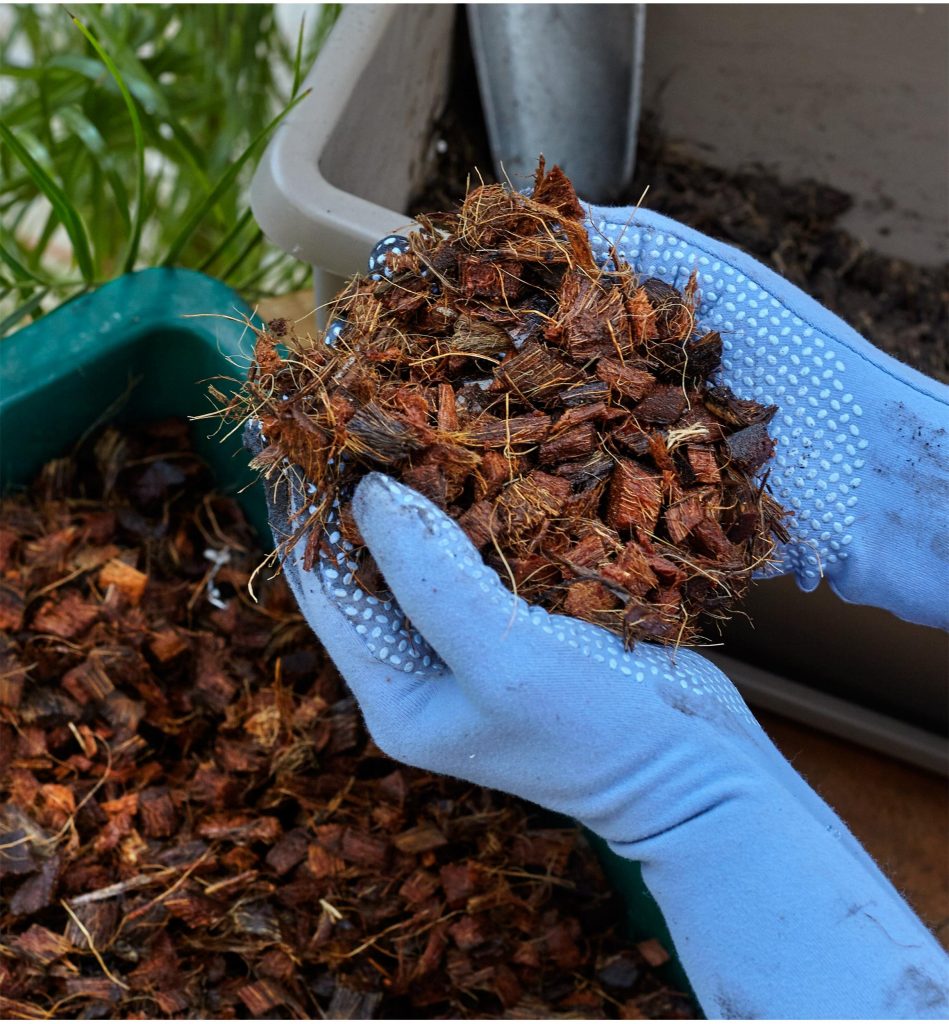
Coco coir serves as an exceptional growing medium in hydroponic setups due to its outstanding water retention and porosity.
Provides plants with essential moisture and oxygen for healthy growth.
Widely utilized in potting mixes, coco coir’s fibrous nature enhances soil aeration and prevents compaction.
Improves nutrient availability for plants, promoting robust growth.
Coco coir demonstrates promising results in seed germination, thanks to its high water-holding capacity and ability to maintain optimal humidity levels.
Promotes healthy and vigorous seedling development.
Offers an eco-friendly alternative to traditional peat moss, which is non-renewable and harmful to fragile ecosystems during extraction.
Derived from coconut husks, coco coir is a sustainable option that reduces waste and environmental impact.
By utilizing coco coir, gardeners can contribute to sustainable cultivation practices while still achieving excellent growth and yields.
Water Retention Ability of Coco Peat
Coco peat, also known as coir pith, is a byproduct of the coconut industry that offers excellent water retention ability. This organic, sustainable material is highly porous and can hold up to 8 times its weight in water. The structure of coco peat allows it to retain moisture while still maintaining good aeration, making it an ideal choice for various gardening applications.
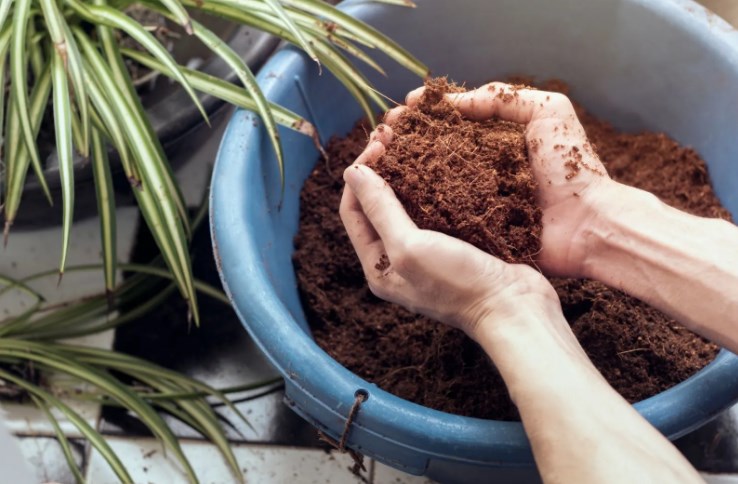
- Hydroponic Systems:
- Stable Moisture Source: Coco peat provides a consistent and stable source of moisture to plant roots in hydroponic setups. This ensures optimal hydration for plant growth.
- Reduced Irrigation Frequency: Its high water-holding capacity means less frequent irrigation, saving both water and labor.
- Suitable for Arid Climates: Even in dry or arid climates, gardeners can rely on coco peat to keep their plants adequately hydrated.
- Traditional Garden Beds and Container Gardening:
- Improved Soil Moisture Retention: When mixed with soil, coco peat enhances the soil’s ability to retain moisture. This reduces the need for frequent watering and prevents water wastage.
- Ideal for Busy Gardeners: For those with busy schedules, coco peat minimizes the effort required for watering.
- Limited Water Access: Gardeners with limited access to water sources benefit from coco peat’s water retention properties.
- Overall Plant Health and Vigor:
- Strong Root Development: The enhanced water retention promotes robust root growth.
- Efficient Nutrient Uptake: Healthy roots lead to efficient nutrient absorption, contributing to overall plant vitality.
In conclusion, the water retention ability of coco peat makes it a valuable asset for various gardening practices. From hydroponics to traditional soil-based cultivation, this organic material offers an efficient and sustainable solution to maintain adequate moisture levels for optimal plant growth. Whether you are a novice gardener or an experienced horticulturist, coco peat can be a worthwhile addition to your gardening arsenal.
Water Retention Ability of Coco Coir
Coco coir, derived from the fibrous outer husk of coconuts, is well-known for its impressive water retention ability. This characteristic makes it an excellent choice for gardeners and hydroponics enthusiasts who are looking for a growing medium that can efficiently hold moisture.
Nutrient Retention in Coco Peat
Coco peat, also known as coir pith, is highly regarded for its excellent nutrient retention properties. It has the capacity to hold and release essential nutrients to plants, providing them with a steady supply of nourishment. This remarkable attribute makes coco peat an ideal medium for gardening, especially in hydroponic systems.

- The high lignin content in coco peat helps to create a favorable environment for beneficial microorganisms that contribute to nutrient cycling and plant growth.
- These microorganisms break down organic matter and convert it into forms that plants can readily absorb.
- Additionally, the porous nature of coco peat allows for aeration of the root zone, enhancing root development and nutrient uptake.
- As a result, plants grown in coco peat often exhibit vigorous growth and abundant yields.
- This makes it a popular choice for professional growers and gardening enthusiasts alike.
- Coco peat has excellent nutrient retention properties
- It can hold and release essential nutrients to plants
- Provides a steady supply of nourishment to plants
- Ideal medium for gardening, especially in hydroponic systems
- High lignin content creates a favorable environment for beneficial microorganisms
- Microorganisms contribute to nutrient cycling and plant growth
- Breaks down organic matter into forms that plants can readily absorb
- Porous nature allows for aeration of the root zone
- Enhances root development and nutrient uptake
- Plants grown in coco peat exhibit vigorous growth and abundant yields.
Nutrient Retention in Coco Coir
Coco coir, derived from the fibrous husk of the coconut, is an excellent medium for nutrient retention in gardening and hydroponics. This natural product has a high cation exchange capacity (CEC), which allows it to retain and release essential plant nutrients over an extended period. The fibrous structure of coco coir provides ample surface area for nutrient absorption, preventing leaching and ensuring that plants receive a steady supply of minerals for optimal growth.

- Nutrient Retention Capacity:
- Higher Than Peat Moss and Rockwool: Studies have demonstrated that coco coir surpasses other growing mediums like peat moss or rockwool in its ability to retain nutrients.
- Ideal for All Gardeners: Whether you’re a beginner or an experienced gardener, coco coir provides reliable nutrient retention, ensuring healthy plant growth.
- pH-Neutral Nature:
- No Significant pH Impact: Coco coir is pH-neutral, meaning it doesn’t significantly alter the acidity or alkalinity of the growing medium.
- Customizable pH Levels: Gardeners can easily adjust and maintain the desired pH levels for specific plants, promoting efficient nutrient uptake and overall plant health.
In summary, coco coir’s nutrient retention capacity and pH neutrality make it an excellent choice for both traditional soil-based gardening and hydroponic systems. It empowers gardeners to cultivate thriving plants while conserving water and maintaining sustainability. 🌱🌿
pH Level of Coco Peat
Coco peat, also known as coir peat, is a popular growing medium used in gardening and horticulture. One important aspect to consider when using coco peat is its pH level. The pH level of coco peat generally ranges from 5.5 to 6.5, which is slightly acidic to slightly neutral.
This makes it suitable for a wide range of plants, as most prefer a slightly acidic to neutral pH environment. Maintaining the right pH level is crucial to ensure optimal nutrient availability and absorption for plants. When the pH level is within the appropriate range, plants are able to efficiently uptake nutrients, resulting in healthy growth and development.
The pH level of coco peat can be adjusted if necessary, depending on the specific requirements of the plants being grown. For instance, if you are growing acid-loving plants such as blueberries or azaleas, you can lower the pH level by adding small amounts of elemental sulfur.
On the other hand, if you are growing alkaline-loving plants like lavender or sage, you can raise the pH level by adding dolomite lime. Regular monitoring of the pH level and making adjustments as needed will help maintain an optimal growing environment for your plants when using coco peat as a growing medium.
Regular monitoring of the pH level and making adjustments as needed will help maintain an optimal growing environment when using coco peat as a growing medium.
pH Level of Coco Coir
Coco coir, also known as coconut fiber, is a popular growing medium in the horticultural industry. Its pH level is an important factor to consider when using it in gardening applications. The pH level of coco coir typically ranges from 5.5 to 6.5, making it slightly acidic to neutral. This pH range is ideal for a wide range of plants, as most prefer a slightly acidic growing environment.
- Maintaining the proper pH level in your growing medium is crucial for the overall health and growth of your plants.
- Coco coir’s natural pH level is well-suited for many plant varieties, allowing them to efficiently absorb essential nutrients from the growing medium.
- Additionally, the slightly acidic to neutral pH level of coco coir helps with the availability and uptake of certain nutrients, promoting healthy root development and overall plant vitality.
- When incorporating coco coir into your gardening practices, it is important to regularly monitor the pH level of the medium and make any necessary adjustments to ensure optimal plant growth.
- Balancing the pH level will help create an environment where plants can thrive and reach their full potential.
Environmental Impact of Coco Peat
Coco peat is a widely used growing medium in gardening and horticulture due to its numerous benefits. However, like any other agricultural product, it is important to consider its environmental impact. Coco peat is primarily made from the outer husk of coconuts, which would otherwise be considered waste.
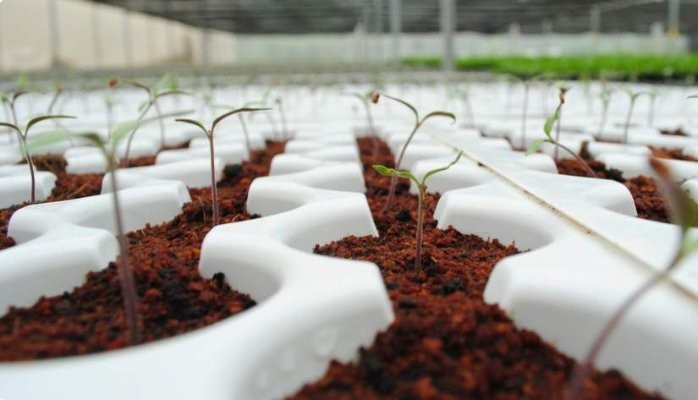
Byproduct Repurposing: Coco peat repurposes coconut husks, reducing landfill waste.
Sustainable Resource: Coconuts are continually harvested, ensuring a constant supply without depleting natural resources.
Organic Composition: Coco peat is composed of organic matter that naturally breaks down over time.
Reduced Pollution Risk: Biodegradability minimizes pollution when disposing of used coco peat.
Reuse and Composting: Coco peat can be reused or composted, enhancing its eco-friendliness.
Production Process: Manufacturing coco peat involves washing, buffering, and drying coconut husks, requiring energy and water.
Transportation Impact: Long-distance transportation contributes to greenhouse gas emissions.
Local Sourcing: Opt for local suppliers to minimize transportation-related carbon footprint.
Life Cycle Assessment: Evaluate overall life cycle impact when assessing sustainability.
Environmental Impact of Coco Coir
Coco coir, a widely used growing medium in the horticulture industry, is known for its environmentally friendly characteristics. Unlike other growing mediums such as peat moss, coco coir is a sustainable option that has a minimal impact on the environment. It is made from the waste product of coconut husks, which are usually discarded after the removal of the coconut meat and water.
Reduces Demand for Peat Moss:
- Coco coir serves as an alternative to peat moss, reducing the need for harvesting from peat bogs.
- Helps prevent habitat destruction and minimizes carbon dioxide emissions associated with peat extraction.
Preserves Vital Ecosystems:
- By using coco coir, gardeners and farmers contribute to the preservation of peat bogs and other sensitive ecosystems.
- Supports sustainable agricultural practices and biodiversity conservation efforts.
Lower Environmental Impact:
- The production process of coco coir requires less energy and generates fewer greenhouse gas emissions compared to other growing mediums.
- Contributes to a reduced environmental footprint and promotes eco-friendly gardening practices.
Promising Solution for Sustainability:
- Coco coir offers a promising solution for environmentally-conscious individuals seeking to reduce their impact on the planet.
- Enables optimal plant growth while supporting sustainable agriculture and environmental conservation efforts.
Cost Comparison between Coco Peat and Coco Coir
Coco peat and coco coir are both popular choices for horticultural and agricultural applications due to their numerous benefits. When it comes to cost comparison between these two materials, it is important to consider various factors.
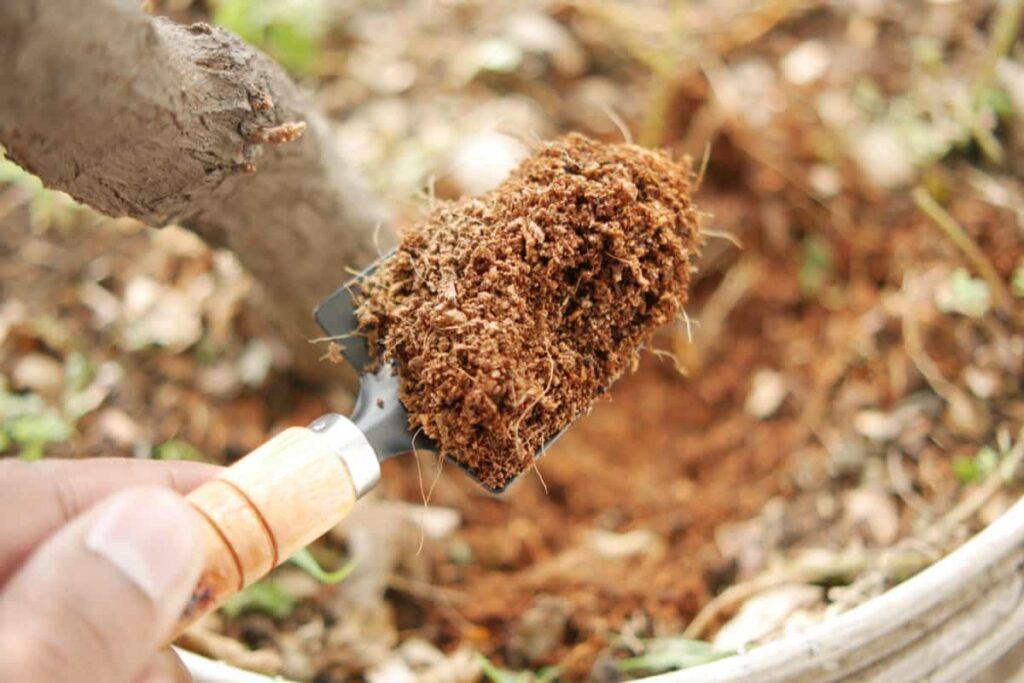
- Raw Material Costs:
- Coco Coir: Slightly more expensive than coco peat due to additional processing steps (grinding and husk processing).
- Coco Peat: Simpler production process, generally more cost-effective.
- Usage Efficiency:
- Coco Coir:
- Water-Holding Capacity: Higher than coco peat, reducing the need for frequent replacement.
- Longer Lifespan: Lasts longer, potentially saving costs over time.
- Aeration: Provides better aeration for healthy root growth.
- Coco Peat:
- Water Retention: Adequate, but may require more frequent irrigation.
- Shorter Lifespan: May need replacement sooner.
- Nutrient Retention: Still effective, but not as long-lasting as coco coir.
- Coco Coir:
- Suitability for Different Plant Types:
- Both Materials:
- Suitable for a wide range of plants.
- pH-neutral, customizable for specific requirements.
- Considerations:
- Coco Coir: Ideal for plants sensitive to overwatering.
- Coco Peat: Versatile and eco-friendly.
- Both Materials:
- Final Decision:
- Evaluate specific needs, including water retention, nutrient requirements, and environmental impact.
- Choose based on plant type and overall cultivation system.
The following table explains the cost comparison between coco peat and coco coir:
| Aspect | Coco Peat | Coco Coir |
|---|---|---|
| 1. Price per Cubic Foot | – Typically less expensive. | – Can be slightly more expensive. |
| – Prices may vary based on source and quality. | – Higher quality coir may command a premium. | |
| 2. Bulk Purchase Discounts | – Discounts may be available for bulk purchases. | – Similar bulk purchase options may be available. |
| – Bulk pricing may vary by supplier and region. | – Prices may be influenced by processing methods. | |
| 3. Availability | – Widely available in the market. | – Generally readily available. |
| – Available from various suppliers and distributors. | – Global availability due to widespread coconut cultivation. | |
| 4. Shipping Costs | – May have lower shipping costs depending on the source. | – Shipping costs can vary based on location and supplier. |
| – Local availability may reduce shipping expenses. | – May be affected by distance from coconut processing regions. | |
| 5. Environmental Impact | – Considered a sustainable and renewable resource. | – Also considered environmentally friendly. |
| – Coconut coir is a byproduct of coconut processing. | – Coir production utilizes coconut husks, a waste product. |
Remember, both coco peat and coco coir offer value, and the choice depends on your gardening goals and preferences. 🌱🌿
Suitability for Different Plant Types – Coco Peat
Coco peat, also known as coir peat, is a highly versatile growing medium that is suitable for a wide range of plant types. Due to its excellent water retention properties, coco peat is particularly well-suited for plants that require consistent moisture levels, such as tropical or moisture-loving plants.

- Optimal Air and Water Exchange:
- Healthy Root Development: Coco peat’s high porosity allows efficient exchange of air and water, promoting robust root growth.
- Prevents Waterlogging: It prevents water accumulation, making it ideal for plants sensitive to overwatering.
- pH-Neutral Nature:
- Compatibility with Different Plants: Coco peat’s neutral pH level makes it suitable for a wide variety of plants.
- Customizable pH Levels: Gardeners can easily adjust the pH to meet specific plant requirements.
- Versatility Across Plant Types:
- Herbs and Vegetables: Coco peat supports the growth of herbs, leafy greens, and vegetables.
- Ornamentals and Succulents: It provides a balanced environment for ornamental plant and succulents.
- Eco-Friendly Alternative:
- Enhanced Plant Health: Incorporating coco peat into gardening practices improves overall plant health and productivity.
- Sustainable Choice: It offers an eco-friendly alternative to traditional soil-based growing mediums.
In summary, whether you’re a beginner or an experienced gardener, coco peat is a valuable resource that fosters healthy plant growth while conserving water and promoting sustainability. 🌱🌿
Suitability for Different Plant Types – Coco Coir
Coco coir, derived from the fibrous husk of coconuts, is a versatile growing medium that offers immense suitability for a wide range of plant types. Its unique composition and properties make it an excellent choice for both indoor and outdoor gardening enthusiasts.
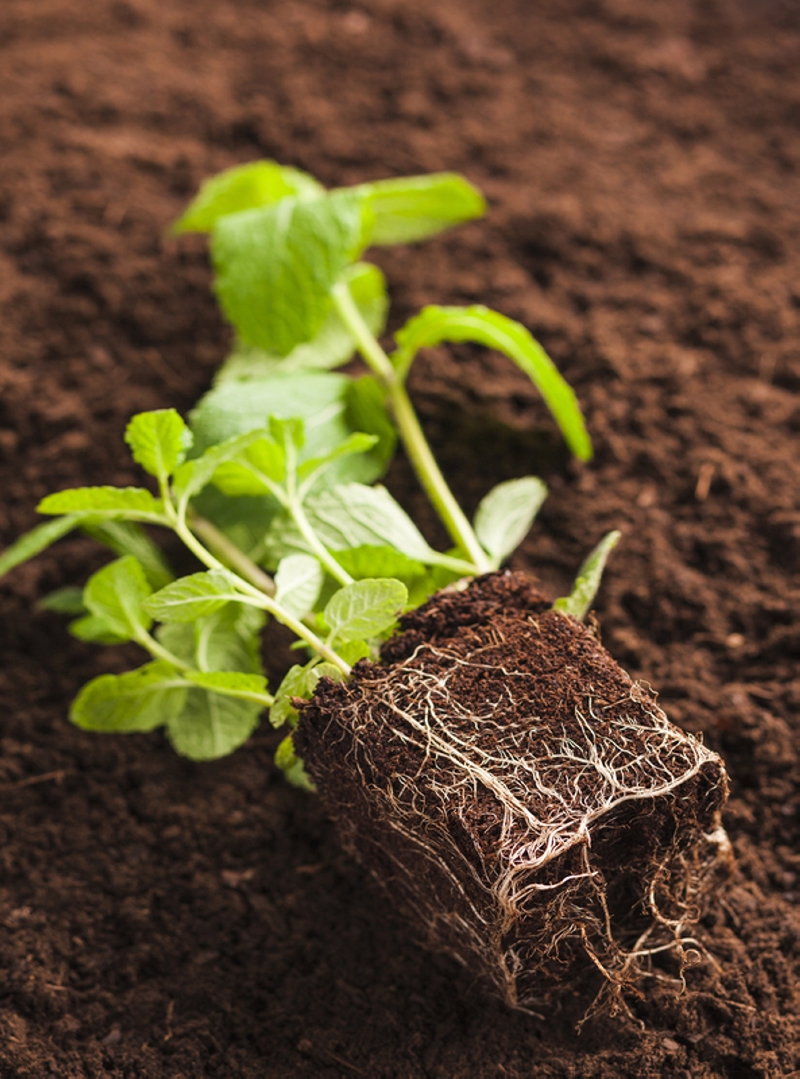
Exceptional Water Retention Ability:
- Coco coir can hold up to 10 times its weight in water, ensuring plants receive a consistent moisture level.
- Reduces the need for frequent watering, making it convenient for busy gardeners.
Promotes Healthy Root Growth:
- Excellent aeration provided by coco coir promotes healthier root growth and prevents waterlogged conditions.
Nutrient Retention Properties:
- Coco coir excels in nutrient retention, providing plants with a consistent supply of essential elements.
- High cation exchange capacity (CEC) allows coco coir to hold and release plant nutrients in a controlled manner.
Suitability for Various Plant Types:
- Suitable for a wide range of plant types, from fruiting trees to delicate flowers, due to its versatile qualities.
- Gardeners can customize the nutrient content of coco coir by adding fertilizers, catering to the specific needs of different plants.
Conclusion:
- Coco coir’s remarkable water retention and nutrient retention properties make it a reliable and effective growing medium for various plant types.
- Whether growing herbs, vegetables, or flowering plants, coco coir supports healthy and abundant plant growth, making it a valuable tool for gardening enthusiasts.
Watch video for more information:
FAQ
What is the difference between coco peat and coco coir?
Coco peat refers to the fibrous material derived from coconut husks, while coco coir refers to the processed and compressed form of coco peat.
How does coco peat retain water?
Coco peat has excellent water retention abilities due to its high porosity and ability to hold up to 10 times its weight in water.
What is the nutrient retention capability of coco coir?
Coco coir has good nutrient retention properties, allowing it to hold onto essential plant nutrients and release them gradually over time.
What is the pH level of coco peat?
Coco peat typically has a slightly acidic to neutral pH level, ranging between 5.5 and 6.5.
Can coco coir be used for all types of plants?
Yes, coco coir is suitable for a wide range of plant types, including vegetables, fruits, flowers, and houseplants.
Are there any environmental concerns associated with using coco peat or coco coir?
Both coco peat and coco coir are considered eco-friendly alternatives to traditional growing mediums, as they are made from renewable coconut husks. However, the environmental impact can vary depending on factors such as sourcing and production practices.
How does the cost of coco peat compare to coco coir?
Generally, coco coir tends to be slightly more expensive than coco peat due to the additional processing involved in its production.
Which plant types are most suitable for coco peat?
Coco peat is particularly suitable for plants that prefer a well-drained growing medium, such as succulents, cacti, and herbs.
Can coco coir be used for hydroponic systems?
Yes, coco coir can be used as a growing medium in hydroponic systems, providing an inert and stable substrate for plant roots.
Does coco coir require any special preparation before use?
Yes, coco coir should be properly rehydrated and washed to remove excess salts and ensure optimal plant growth.

Studied Agricultural Engineering-Plant Protection at University of California, Davis.
Head of Content writing team at Southelmontehydroponics.com

